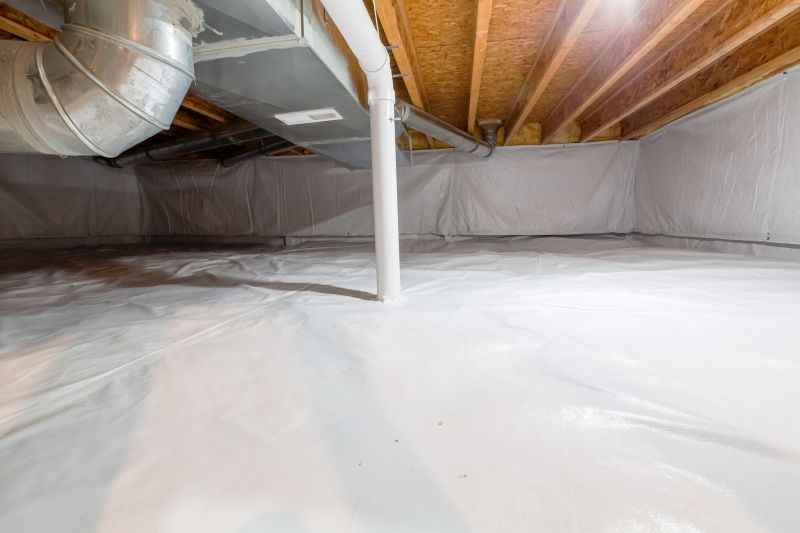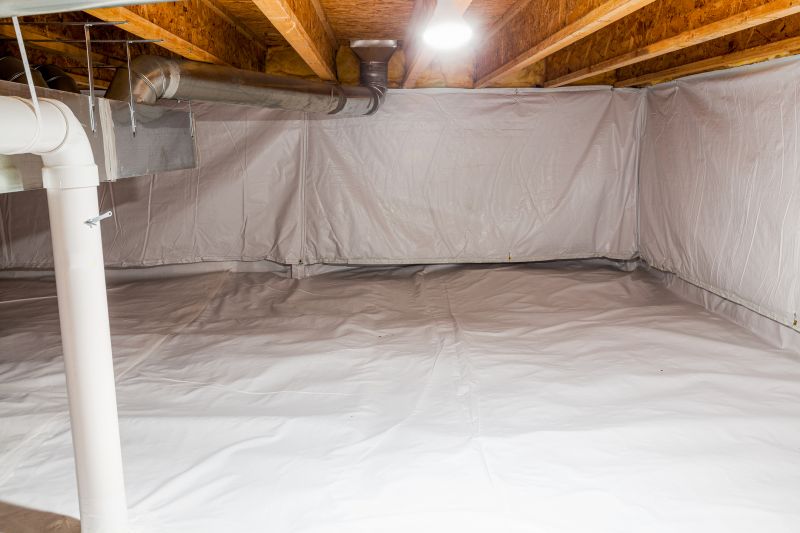Transform Your Crawlspace into a Dry, Healthy Space
Crawlspace encapsulation involves sealing and insulating the crawlspace area beneath a building to prevent moisture intrusion, improve indoor air quality, and enhance energy efficiency. Proper encapsulation can significantly reduce the risk of mold growth, wood rot, and pest infestations, which are common issues in unsealed crawlspaces.
Encapsulation effectively prevents moisture from entering the crawlspace, reducing mold growth and structural damage caused by excess humidity.
Sealing the crawlspace helps maintain consistent indoor temperatures, leading to lower energy bills and improved comfort.
Reducing mold and dust mites in the crawlspace minimizes airborne allergens, contributing to healthier indoor air quality.
A sealed environment deters pests and rodents from nesting beneath the home, reducing potential damage and health risks.

Image showcasing a fully sealed and insulated crawlspace with vapor barrier installed.

Photo illustrating the airtight sealing and insulation materials used during encapsulation.

Image of vents covered and sealed, preventing outside moisture entry.

Photo demonstrating the insulation and vapor barrier in a completed crawlspace project.
Statistics indicate that unsealed crawlspaces can contribute to up to 50% of a home's energy loss due to air leaks. Additionally, homes with unencapsulated crawlspaces are more susceptible to mold growth, which can affect indoor air quality and lead to respiratory issues. Encapsulation reduces these risks by creating a controlled environment beneath the home.
Failure to encapsulate a crawlspace can result in increased energy costs, structural damage, and health problems related to mold and pests. Moisture intrusion can also cause wood rot and compromise the foundation over time, leading to costly repairs.
| Issue | Impact |
|---|---|
| Excess Moisture | Leads to mold growth, wood rot, and structural damage. |
| Energy Loss | Unsealed crawlspaces can account for significant heat loss, increasing utility bills. |
| Air Quality Problems | Mold, dust mites, and pests can degrade indoor air quality. |
| Pest Infestations | Rodents and insects can nest in unsealed spaces, causing damage and health risks. |
| Structural Damage | Persistent moisture can weaken foundation components over time. |
| Health Risks | Exposure to mold spores and allergens can cause respiratory issues. |
| Decreased Home Value | Unaddressed crawlspace issues can reduce property appeal and worth. |
| Increased Repair Costs | Neglecting moisture control can lead to costly future repairs. |
Proper crawlspace encapsulation offers a durable solution to these issues, creating a cleaner, healthier, and more energy-efficient home environment. Investing in encapsulation can prevent long-term damage and reduce ongoing maintenance costs.
Contact today to receive a detailed quote for crawlspace encapsulation services and learn how this upgrade can benefit property health and efficiency.
